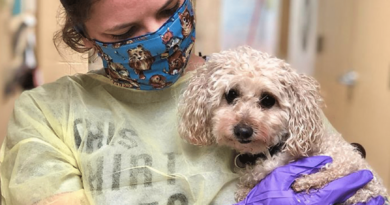Premature Graying: Reasons, Options
Salt and pepper, silver, pewter, charcoal. Whatever you call it, gray hair happens to all of us at some point. But why do some people go gray in their 20s while others don’t see the first sign of silver until age 50? If you’re going gray early, what are your options?
What’s ‘Premature’
Hair goes gray when color-producing cells stop producing pigment, says Jeffrey Benabio, MD, a dermatologist at Kaiser Permanente in San Diego. Naturally occurring hydrogen peroxide can also build up in the hair, bleaching the color.
Typically, white people start going gray in their mid-30s, Asians in their late 30s, and Blacks in their mid-40s. Half of all people have a significant amount of gray hair by the time they turn 50.
A white person is considered to be prematurely gray if their hair turns gray by age 20; gray before 30 is early for Blacks.
Medical Problem?
Going gray, by itself, does not mean you have a medical problem, except in rare cases.
Contrary to popular belief, stress has not been shown to cause gray hair. Scientists don’t know exactly why some people go gray early, but genes play a large role.
Also, a vitamin B-12 deficiency or problems with your pituitary or thyroid gland can cause premature graying that’s reversible if the problem is corrected, Benabio says.
Some research has suggested a connection between premature graying and lower bone density later in life. But in 2007, a study of about 1,200 California men and women showed no such link.
“Your level of bone density is related to activity level, your weight, your height, your ethnicity. It’s not related to your hair or the things controlling the color of your hair,” says researcher Deborah J. Morton, PhD, of the University of California, San Diego.
Not Ready for It Yet?
You may love the new hair color that nature is giving you. But if you don’t, you have a lot of options.
There are lots of choices for concealing gray, says Ron King, owner of Ron King Salon and bô Salon in Austin, Texas, and a national spokesman for L’Oréal Professionnel. They include:
- Semi-permanent or demi-permanent color: The color lasts a few weeks and is a good option for people just starting to see gray according to King. “If you have a lot of your natural colors running through, you don’t want to take that away,” King says. “You can just blend it without disrupting what you already have that’s already beautiful and natural.”
- Highlights: Scattered strands are lightened to blend the gray with the rest of your hair.
- Permanent color: King suggests using it once you have 45% to 50% gray. Some clients leave some gray around their face to make a statement.
- Hair products: If you don’t want to dye but still want to conceal the gray, King suggests a coloring tool such as spray-on airbrush hair makeup, which washes out with a shampoo.
Embracing the Gray
More people are opting to “go gray,” says Diana Jewell, author of Going Gray, Looking Great.
“The myth that gray hair makes you old is just that — a myth. If you were young, vibrant, active, healthy pre-gray, you’re still going to be that way. It’s all in the attitude you bring to it,” Jewell says. “If you think of it as merely another color choice, you won’t be afraid of gray.”
Journalist Anne Kreamer went gray at 25 and spent an estimated $65,000 on salon color treatments over the next 20 years. She chronicled her journey back to gray at age 49 in the book Going Gray: What I Learned about Beauty, Sex, Work, Motherhood, Authenticity, and Everything Else That Matters.
“Look at an Anderson Cooper or a Steve Martin or men who have historically gone gray early,” Kreamer says. “I think they look terrific and it becomes almost an iconic differentiation for them”. The same can be true for women. But, she says, women have been brainwashed into believing gray is unattractive and undesirable.
These simple tips can help you go gray with style:
- If you’ve been dyeing, consider going “cold turkey” with a chic, short haircut.
- Work with a colorist to weave in highlights and use toners to minimize the transition line between your natural hair color and your former hair dye, Kreamer says.
- Get a modern haircut. King recommends a style with sharper edges, such as “a graduated bob of some type, some really smooth bangs, a really nice fringe.”
- Take care of your hair. Shampoos with a blue base can help prevent gray hair from developing a yellowish cast, says Jewell, who offers a list of products at goinggraylookinggreat.com. Using a conditioning mask once a month keeps hair well-moisturized.
- Use a flat iron to make your hair look sleeker and shinier. Gray hair tends to get frizzy, and “a flat iron on your hair brings back the luster to it,” King says.
- Enjoy your life. “Beauty is not determined by the color of a woman’s hair,” says Cindy Joseph, a silver-haired model for Ford Models Inc. and CEO of Boom! By Cindy Joseph makeup line. “The ability to take joy in her life is what makes a woman truly beautiful.”





